This carte-de-visite came to me from Massachusetts, but it didn’t originate there. The title of the post is taken from a handwritten note on the back.
Update: Readers all agree that the location referred to was most likely the village of Leeds in Kent:
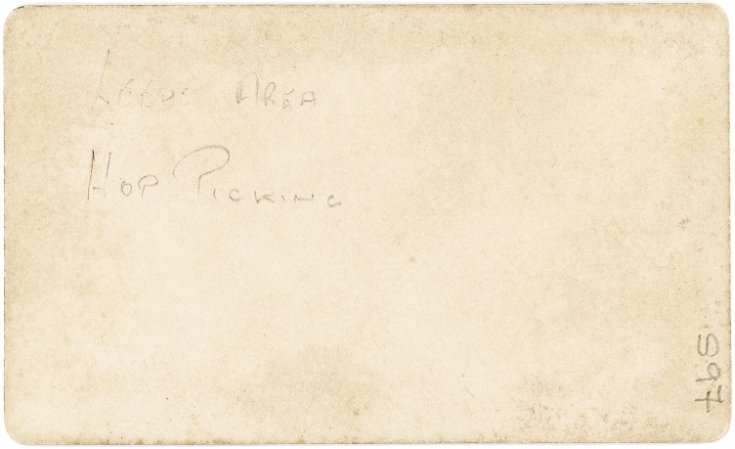
The British Hop Association has the following information on its website:
The UK harvest usually starts in early September and depending on varieties grown and size of farm, it may continue into early October. Tall hops are harvested by cutting the whole bine including string and taking it to the hop picking machine where the hop is separated from the bine, laterals and leaf.
Hedgerow hops are harvested mechanically using a machine developed from the British blackcurrant harvester. The hop and leaf is taken to the hop picking machine where the hop is separated from the leaf. For a video of the British Hop harvest, click here. For more photos on the Hop Harvest, click here.
Arguably the most important aspect of hop farming is the drying. Once clean of the leaf, the hops are distributed into baskets and put into the hop kiln or oast to dry. Hops contain over 80% moisture when picked and in order to make them store, this is reduced to about 10%. They are then baled into bales of 60kg in weight.
Things were done a bit differently 150 years ago. The second link in the excerpt above is to a 2013 article in the Daily Mail, which contains photos of each step of the modern harvest process. In the article, a hop farmer, Ali Capper, compares this process to the old days:
Pre-mechanisation, from the 1950s back, all hops were hand picked and that involved thousands of people. And they came on hop picking holidays from Birmingham and the Black Country factories and the factories of the East End of London.
The people in the photo are wearing a variety of different clothes, some of which seem less appropriate for fieldwork than others. A few are wearing gloves, and everyone is wearing a hat except the infant at the center. In the lower right corner, a boy is holding a small dog. It was a team effort! We can even see a few smiles.




Updated August 24, 2019.
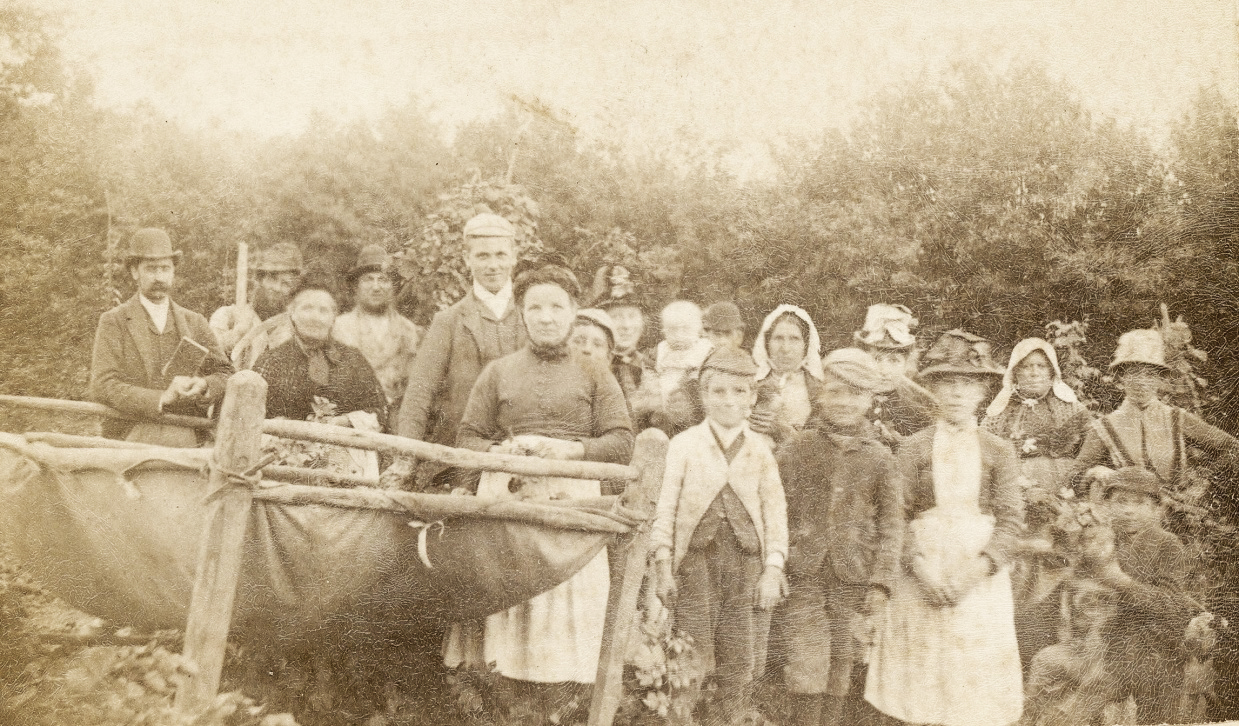
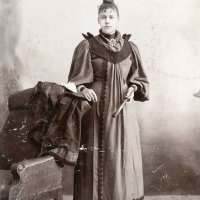
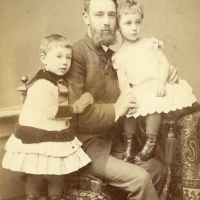
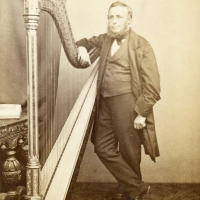
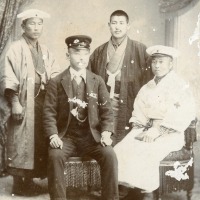
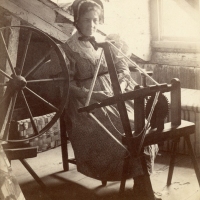
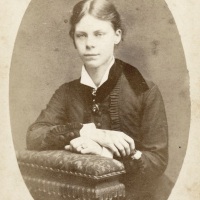
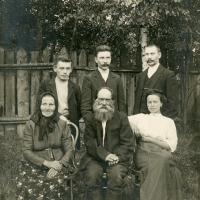
The whole picture in its integrity it is very beautiful but you did great to show first some details. I love old pictures😍
LikeLiked by 2 people
I still don’t have a photo from Italy on the blog but I’m looking for just the right one. 😉 Grazie, Flavia!
LikeLiked by 1 person
I am sure you will find the right one and cannot wait to see it! ☺️
LikeLiked by 2 people
Thanks for sharing this interesting photo and post, Brad! I’ve read that going hop-picking in late Victorian-era England was treated like a vacation by poor city-dwellers (who never got an actual vacation, of course). At least one of the victims of Jack the Ripper (can’t recall which one) had been out to the country hop-picking before she returned to London, where she was murdered. Those were hard times to be poor, but your photo and post help us see these Victorians as real people who had some good times too! And yes, I think the hats have fake flowers, fruit and leaves on them. Sometimes even real stuffed birds were added as decoration on hats of the time.
LikeLiked by 2 people
If people from the cities thought of hop-picking as a working vacation, that would explain why a few of them are smiling in the photo. Admittedly not everyone looks happy, but smiles of any kind are rare in images from the 1870s, when I assume this photo was taken. Maybe a clothing expert will offer some thoughts about the date. Thanks for the great comments, Shayne!
LikeLiked by 1 person
I read the same thing, Shayne, but I can’t remember where. What I didn’t know was that one of Jack the Ripper’s victims had been out picking hops in the country before she was murdered! How in the world did you find that out?
LikeLiked by 1 person
Hi Liz, I found it by reading way too many books about Jack the Ripper!
LikeLiked by 1 person
Liz, the JTR victim was Catherine Eddowes. She had been hop-picking in Kent and returned to London. She was murdered September 30, 1888. https://en.m.wikipedia.org/wiki/Catherine_Eddowes
LikeLiked by 1 person
Thanks, Shayne. I read Donald Rumbelow’s Complete Jack the Ripper back in the ’70s, but I didn’t remember that detail about Catherine Eddowes. That small detail sure humanizes her, doesn’t it?
LikeLiked by 1 person
You are right, their clothes don’t look like working in the field clothes. But then it was the Victorian era and perhaps it got them out of the city. I had to look hard to find smiles.
LikeLiked by 2 people
Some of the smiles are more like hints of smiles. The kids especially seem to be having fun. Of course there’s a scowl or two for good measure. 😉
LikeLiked by 1 person
Nice too see all old photos! 🙂
LikeLiked by 1 person
Tackar så mycket, Annica! 🙂
LikeLiked by 1 person
A fascinating photo. We forget how many jobs were done by hand and then workers were replaced by machines. Shayne brings up a good point. Working outside was preferable to dark and dingy factories. 🙂
LikeLiked by 2 people
I get a festive vibe from this photo. Maybe it’s the boys smiling, or the baby being held up, or the fact that people of different ages–and possibly different social backgrounds–were doing this together. Physical work can create feelings of camaraderie and community. Machines have taken some of that away, but not all of it (thank goodness).
LikeLiked by 2 people
I got the same festive vibe, Brad!
LikeLiked by 1 person
I was surprised to learn that hop picking took place in the north of England , as hop picking is synonymous with Kent, south of London. It was indeed an annual tradition for workers to spend a few weeks in the countryside doing this very hard work, and living in extremely basic accommodation. But by all accounts it was a welcome change from the slums of London and families continued to travel on specially commissioned hop trains right up until the early 1960s. I wonder if this is a kind of ‘harvest home’ photograph? Also remember that a visiting photographer would have been a big deal and maybe people got dressed up as it might be their only chance to be immortalised! When I look on these faces from so long ago, I always think what would they make of our world?
LikeLiked by 2 people
I’m very glad you brought up the location, Louise, as I had wondered about that. I’m becoming convinced that the writer meant the village of Leeds in Kent. That would make a lot of sense, and the writer would have assumed that anyone reading the note would know the county. I think I’ll add a note to the post.
I wonder what they’d make of our world, too. It would be a lot to take in! I think they’d adapt pretty quickly, though. They saw a lot of change in their lifetimes. I wonder which aspects of our world would be the most startling?
LikeLiked by 2 people
I should think you are quite right. This is Leeds in Kent, which is near the centre of hops-growing in that county. Yorkshire is not a hops-growing area (especially not round Leeds!), and I can say that I’ve never seen any growing, if it happens at all.
The clothing is a curious mixture of rustic and town. Two of the men and two of the women look as though they might be natives, though the rest seem to be incomers.
LikeLiked by 2 people
That answers the big question I had: how likely was it that this photo might have been taken in the north? The answer seems to be: not impossible, but very unlikely. Thank you!
The two bearded men at back left look like farmers to me. What do you make of the fellow at far left holding a book? Why would he have that with him?
LikeLiked by 1 person
Yes! Leeds in Kent, you are surely right. What would they find most startling? That so many people now live beyond 50? I’m sure they’d think us all living like kings and queens, compared to them. But are we any happier? Much to ponder…
LikeLiked by 2 people
I love the amount of curiosity your posts bring out in everyone… Not a small feat, my friend. ❤️
LikeLiked by 2 people
I’m glad people enjoy the photos and don’t mind me blogging about things I know little or nothing about (which is most things). No one knows everything, but we can be curious about everything. Thank you for the lovely comment! 😊
LikeLike
Well put!
LikeLiked by 2 people
I love this post, which makes me think of the wonderful Pop Larkin and his family, from the hilarious and life-affirming books by H. E. Bates, which are set in Kent and which sometimes have references to hop fields. This post has elicited so many lovely comments, too. Always a pleasure to read your blog, and to see how many faithful readers you’re getting!
LikeLiked by 3 people
I enjoyed the photo, the ensuing discussion, and the accompanying information about hops-growing. That woman in the video sure was passionate about her hops!
LikeLiked by 2 people
She makes a great sales pitch at 7:15! With all the new breweries opening up in North America and Europe, I think British hops have a very bright future.
LikeLiked by 1 person
Yes, she does! I got quite a kick out of it.
LikeLiked by 1 person
Love historic photos!
LikeLiked by 1 person
Thanks for visiting. 🙂
LikeLiked by 1 person
You’re welcome 😇
LikeLiked by 1 person
My initial assumption was that the book the man is holding is an account ledger. Perhaps tallies were kept in the fields as well as at the drying stations, much as they were when cotton picking in this country was done by hand.
Even in these days of mechanization, individual farmers sometimes pool equipment and go from one farm to the next to bring in the harvest, and there are times when I’ve helped with canning out in the country. When fruit trees or veggies suddenly ripen all at the same time, everyone has to work to get the processing done, and I’m assuming the same was true with the hops.
LikeLiked by 2 people
You’re right about fruit and veggies ripening all at once necessitating dropping everything and “going into production”–even with my small garden!
LikeLiked by 2 people
A magnificent array of headgear in this photo!
LikeLiked by 1 person
You’re so right! I wish the original print were a little sharper, so we could see a few more details.
LikeLiked by 1 person
My first thought was ‘Hops? In Leeds?’ as the area famous for hops is Kent. But of course there was an explanation. If you go around Kent these days, you can still see oast houses everywhere.
About the clothes: they do seem to be not very suitable for hop picking, but I think in Victorian times (and later) people would often wear clothes we might find unsuitable (three-piece suits to the beach etc.). That said, I was wondering whether this is maybe some sort of end-of-harvest celebration. Perhaps the photo was taken to mark the occasion as well. And it would also fit in with the chap with the book – I also thought that he was probably tallying up the sacks of hops or perhaps accounting for the workers’ wages.
LikeLiked by 2 people
I agree with all of your comments! Louise Mabey (above) also suggested it might be a “harvest home” photo, which wasn’t a festival I was familiar with. Now I’d like to visit an oast house and see it from the inside. With the increasing popularity of craft brewing worldwide, the future of hop-growing should be very bright!
LikeLiked by 1 person